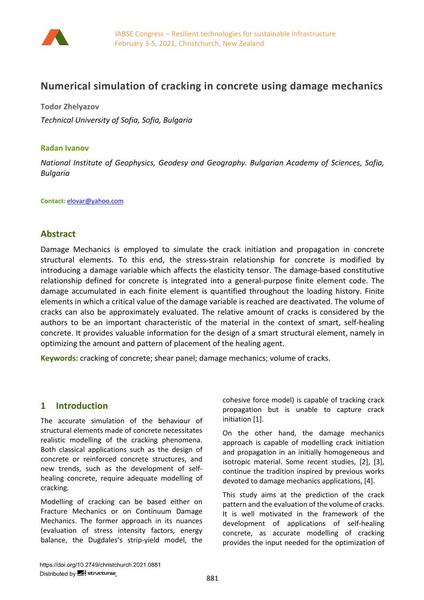Numerical simulation of cracking in concrete using damage mechanics

|
|
|||||||||||
Détails bibliographiques
| Auteur(s): |
Todor Zhelyazov
(Technical University of Sofia, Sofia, Bulgaria)
Radan Ivanov (National Institute of Geophysics, Geodesy and Geography. Bulgarian Academy of Sciences, Sofia, Bulgaria) |
||||
|---|---|---|---|---|---|
| Médium: | papier de conférence | ||||
| Langue(s): | anglais | ||||
| Conférence: | IABSE Congress: Resilient technologies for sustainable infrastructure, Christchurch, New Zealand, 3-5 February 2021 | ||||
| Publié dans: | IABSE Congress Christchurch 2020 | ||||
|
|||||
| Page(s): | 881-889 | ||||
| Nombre total de pages (du PDF): | 9 | ||||
| DOI: | 10.2749/christchurch.2021.0881 | ||||
| Abstrait: |
Damage Mechanics is employed to simulate the crack initiation and propagation in concrete structural elements. To this end, the stress-strain relationship for concrete is modified by introducing a damage variable which affects the elasticity tensor. The damage-based constitutive relationship defined for concrete is integrated into a general-purpose finite element code. The damage accumulated in each finite element is quantified throughout the loading history. Finite elements in which a critical value of the damage variable is reached are deactivated. The volume of cracks can also be approximately evaluated. The relative amount of cracks is considered by the authors to be an important characteristic of the material in the context of smart, self-healing concrete. It provides valuable information for the design of a smart structural element, namely in optimizing the amount and pattern of placement of the healing agent. |
||||
